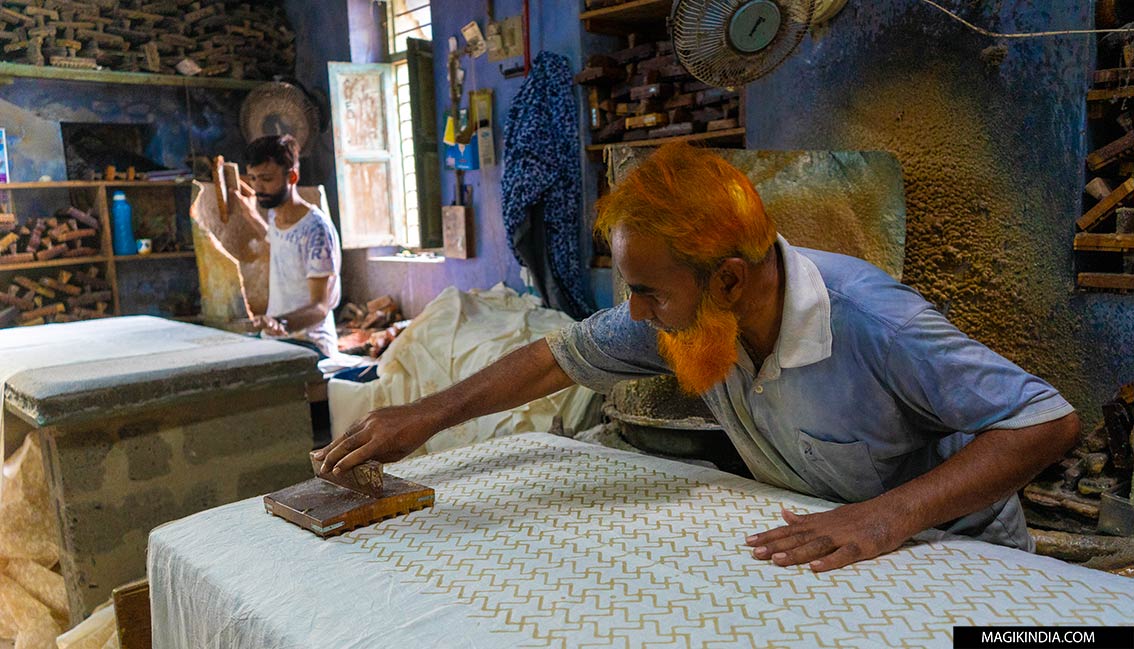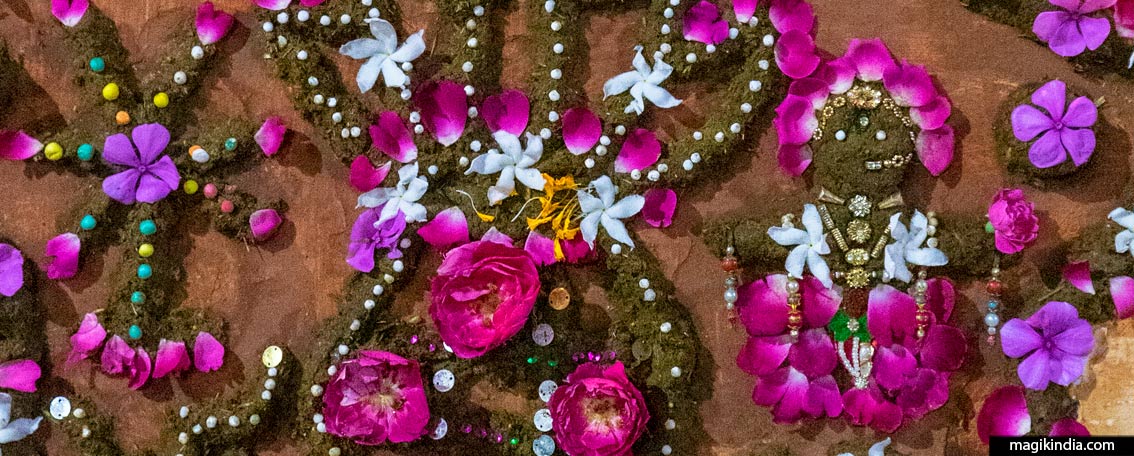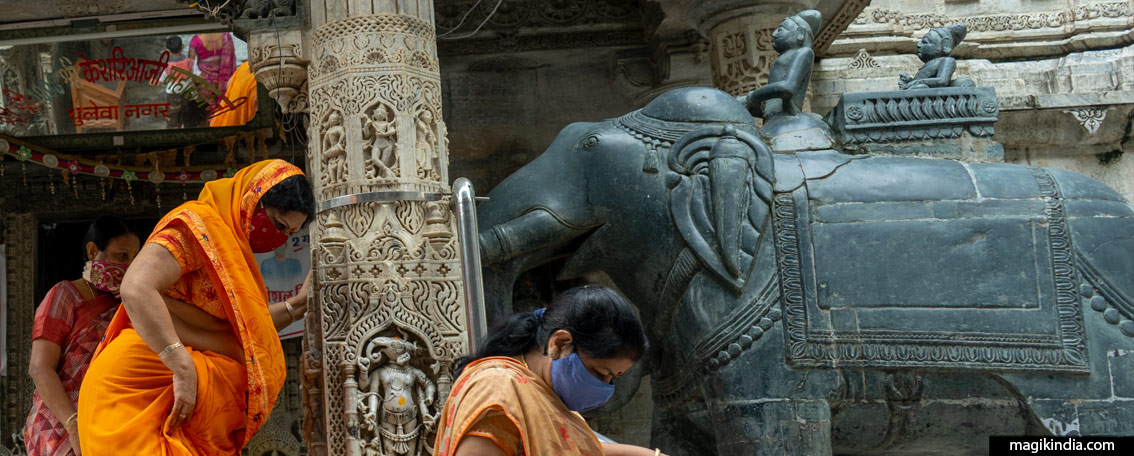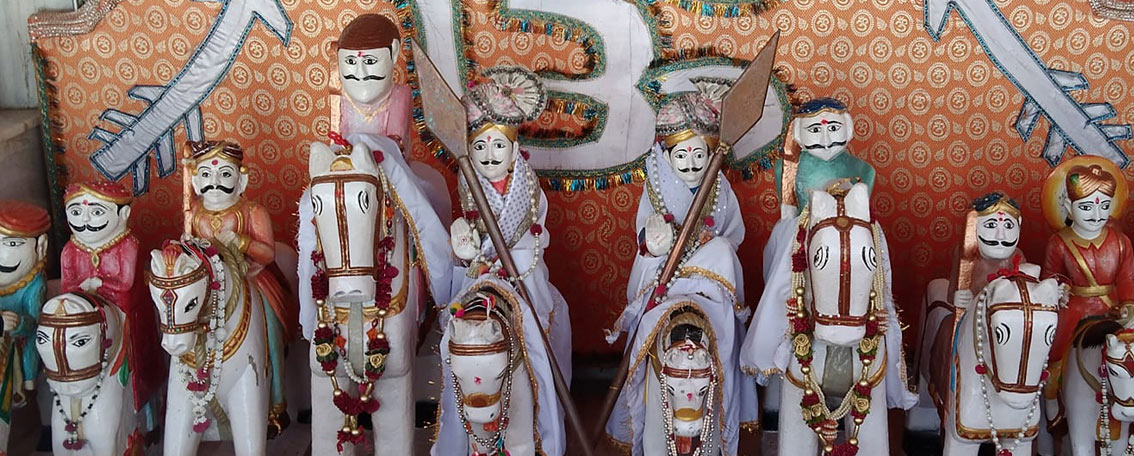
Eight unique temples in Kutch, Gujarat
Apart from the “Rann“, the great salt desert, the district of Kutch, in the northwest of Gujarat, has many other little treasures, which are worth a visit to the region alone. For this article, I have selected eight historic temples, still little known to travellers, which once again bear witness to the richness and cultural diversity of this corner of India.
Kera Temple

Located 20 km south of Bhuj, towards Mundra, the small village of Kera is famous for its Lakheshwara temple dedicated to Shiva. Few travelers stop there, the taxi that took me there didn’t even know about this temple.
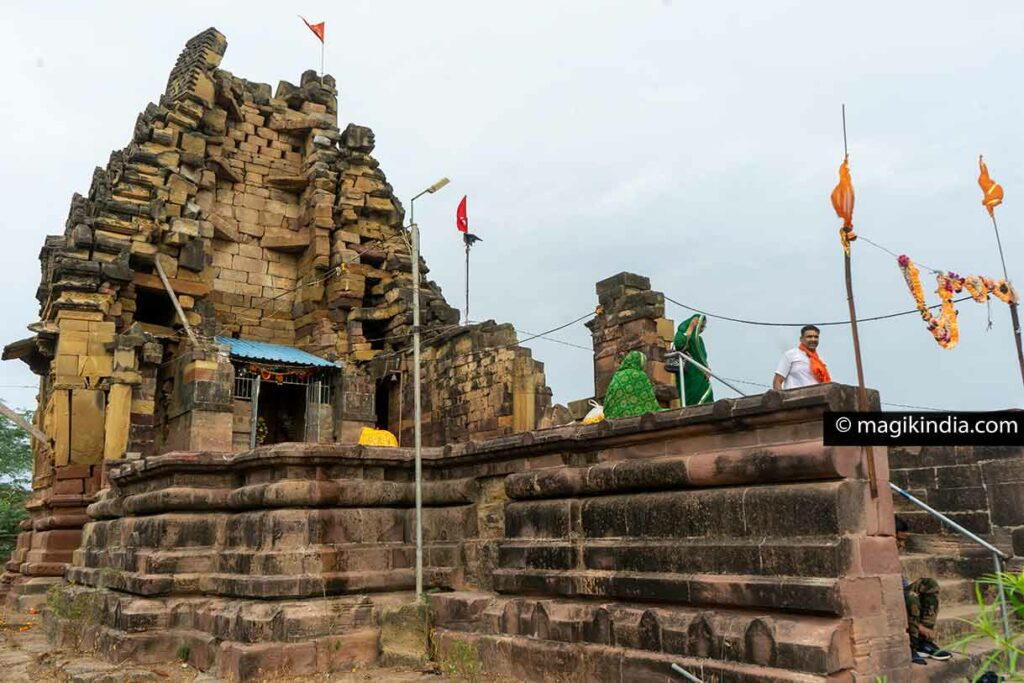
Although severely damaged by the earthquakes of 1819 and 2001, this ancient 10th century sanctuary built during the reign of Lakho Phulani* still retains some interesting architectural elements.
*Lakho Phulani was, in the 10th century, the ruler of Sindh (located now in Pakistan), the district of Kutch and the peninsula of Saurashtra. He made Kera his capital by building a fort and this temple there.
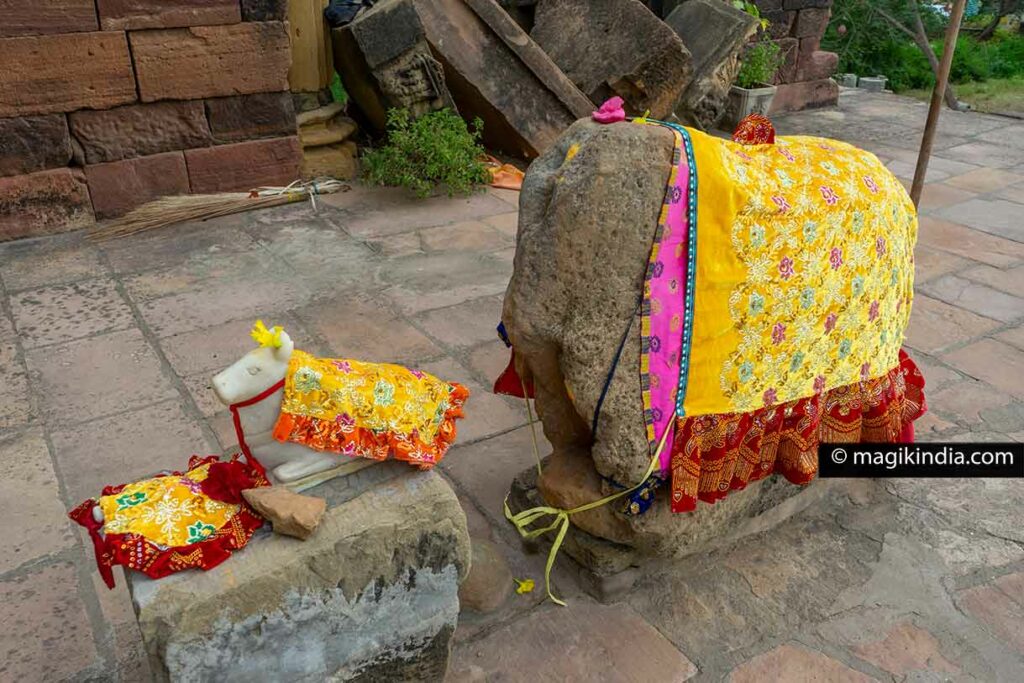
The temple is placed on a platform and it is reached by a flight of steps. All that remains of Lakheshwara is the Garbhagriha (the sanctuary) which houses a Shiva-lingam and part of the Shikhara (the spire). It can be observed that the latter is finely executed with sculptural formations repeating one above the other in a pyramidal fashion.
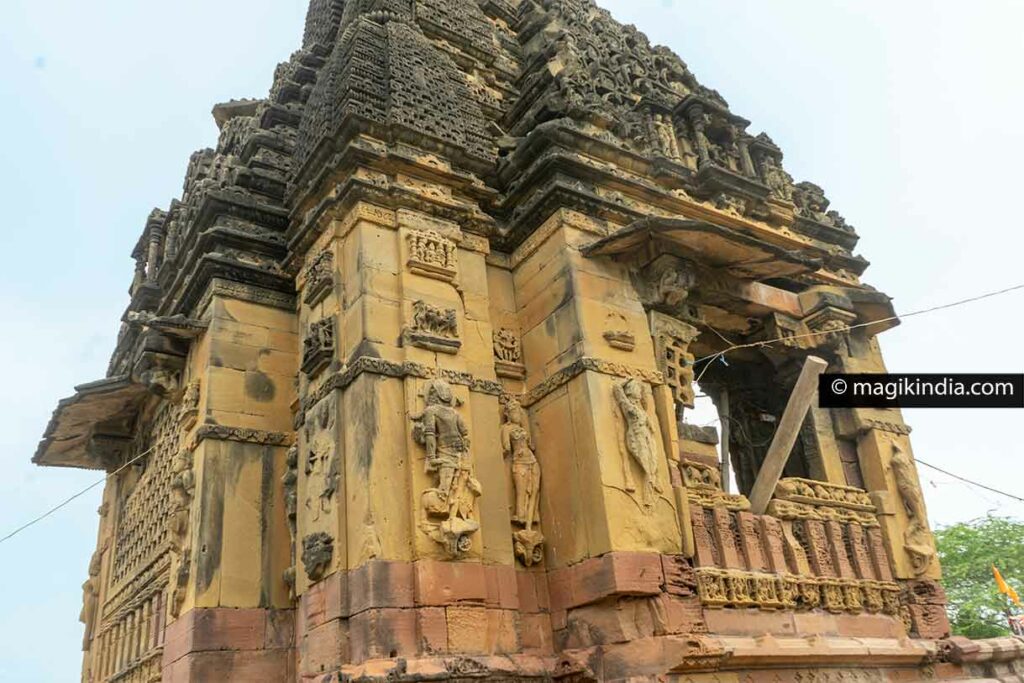
The outer walls of the sanctuary display numerous female sculptures, probably Apsaras, the celestial nymphs as well as the Yaksha demi-gods, spirits of nature.
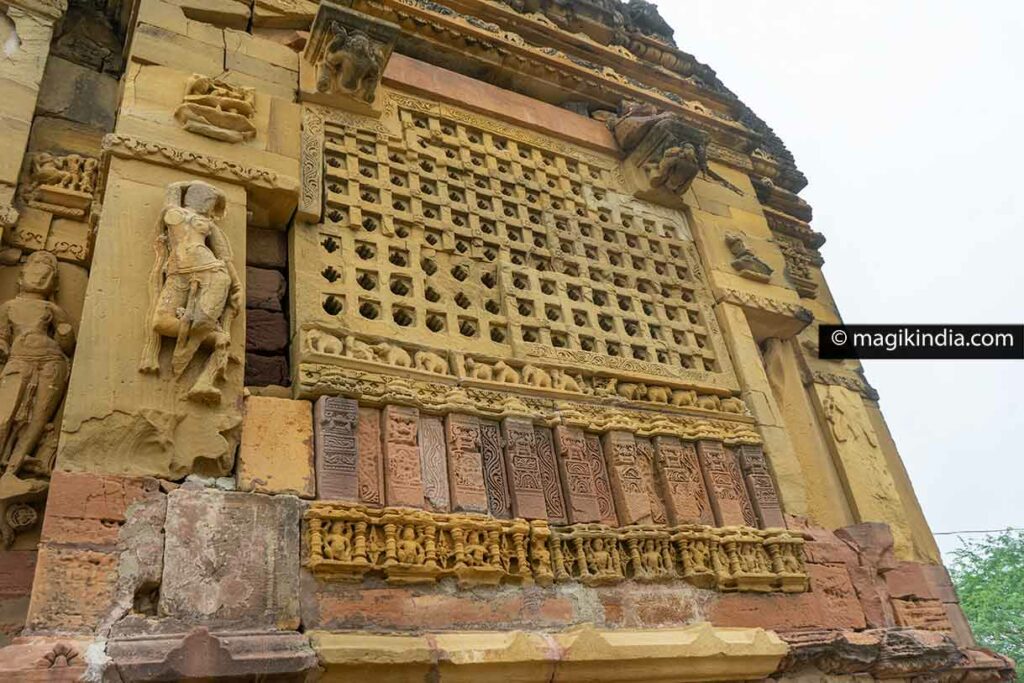
Narayan Sarovar & Koteshwar
Located in the far west of Kutch, Narayan Sarovar and Koteshwar are two major Hindu pilgrimage sites which, however, rarely appear on tourist itineraries.
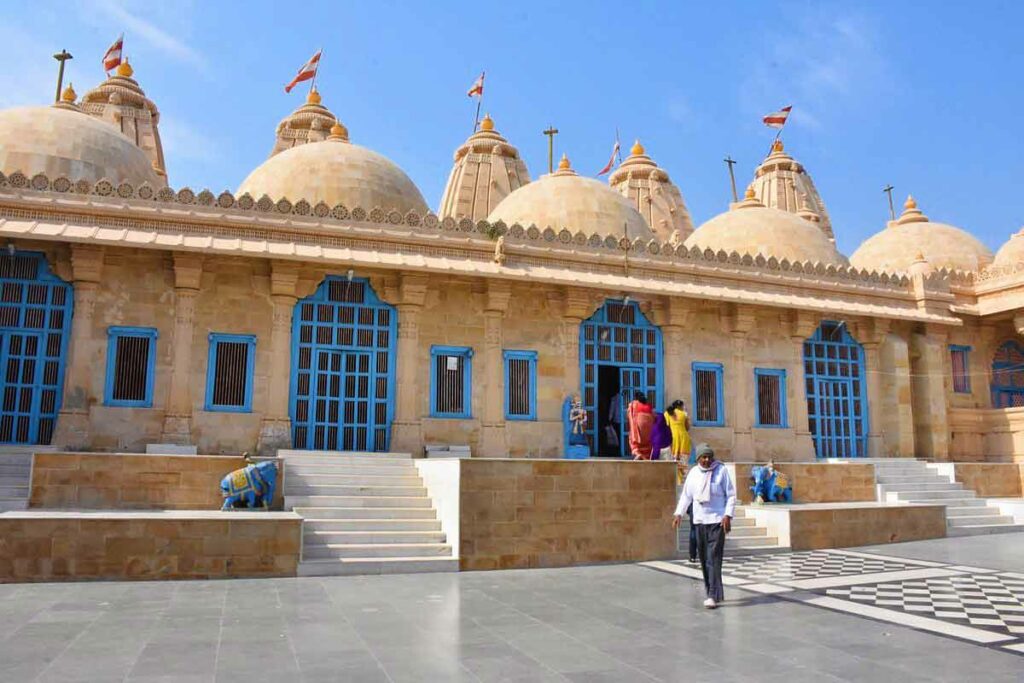
Narayan Sarovar is of particular importance because it is one of the 5 sacred lakes of Hinduism, with Mansarovar in Tibet, Pampa Sarovar near Hampi (Karnataka), Bindu Sarovar in Bhuvaneshwar (Odisha) and Pushkar Lake in Rajasthan; the place is therefore considered auspicious for “Snan”, ritual ablutions and baths.
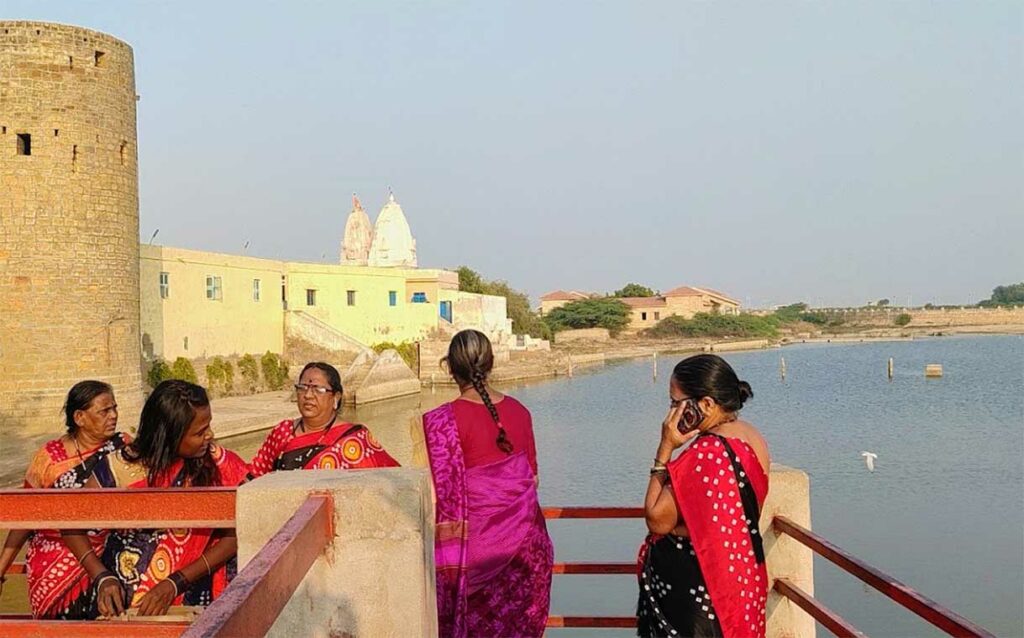
The origin of the Narayan Sarovar dates back to the Puranas. It is said that the region was plagued by a drought and the god Vishnu appeared in response to the ardent prayers of the sages. When he touched the earth with his toe, a lake was immediately created, relieving the inhabitants of their misery.
Around this lake, several temples were built by the wife of Maharao Desalji: Trikamraiji, Laxminarayan, Govardhannath, Dwarkanath, Adinarayan, Ranchodrai and Laxmi.
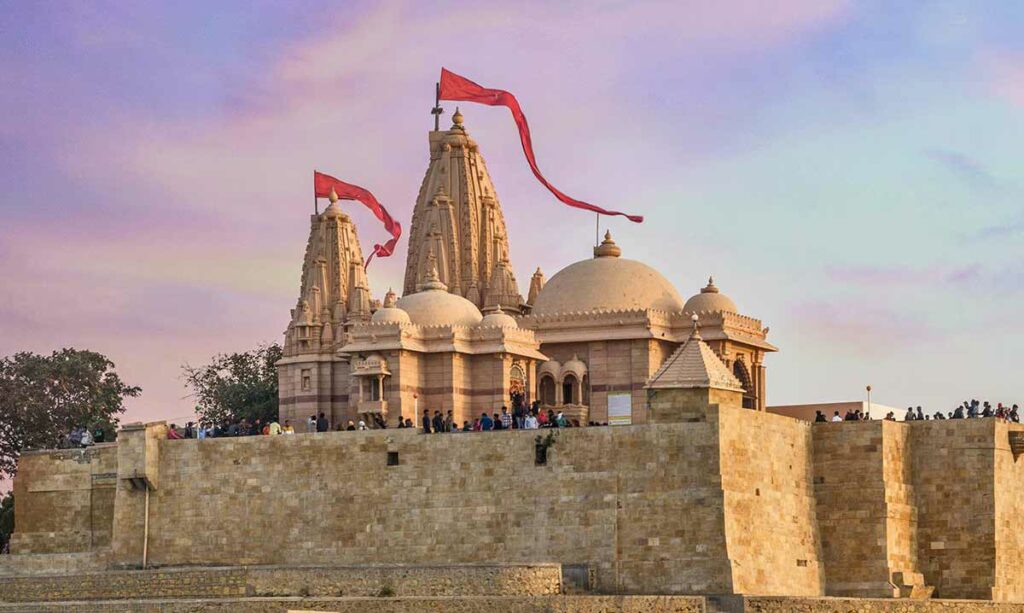
A short distance from the lake (about 2 km), overlooking a stormy sea, there is the Koteshwar Mahadev temple also called “temple of ten million gods”, dedicated to Shiva.
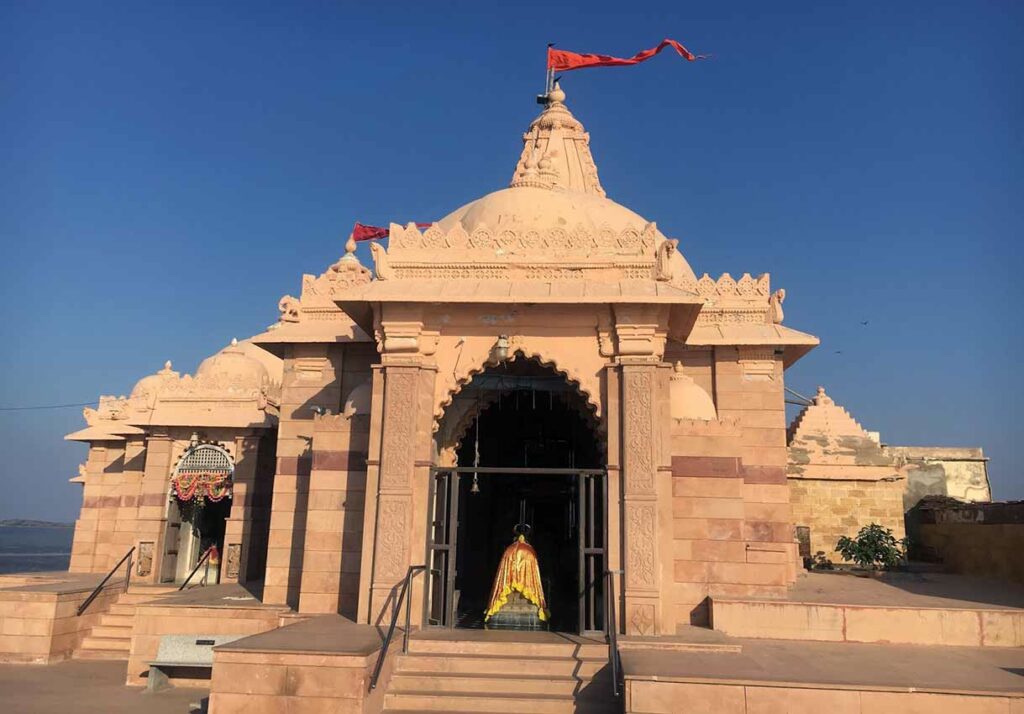
The history of Koteshwar is linked to the Ramayana, the great Indian epic. It is said that Ravana, the demon-king of Sri Lanka, had received from the hands of the god Shiva a lingam following intense asceticism. This lingam had the power to make one immortal, so Shiva asked Ravana to take great care of it. However, Ravana in his haste, accidentally dropped the lingam on earth, at Koteshwar precisely.
This negligence so outraged Lord Shiva that, to punish him, he duplicated the lingam into millions of identical ones, hence the nickname of the temple. Unable to make out the original lingam, Ravana grabbed a random lingam and left for Lanka leaving the real lingam at Koteshwar, around which the current temple was built.
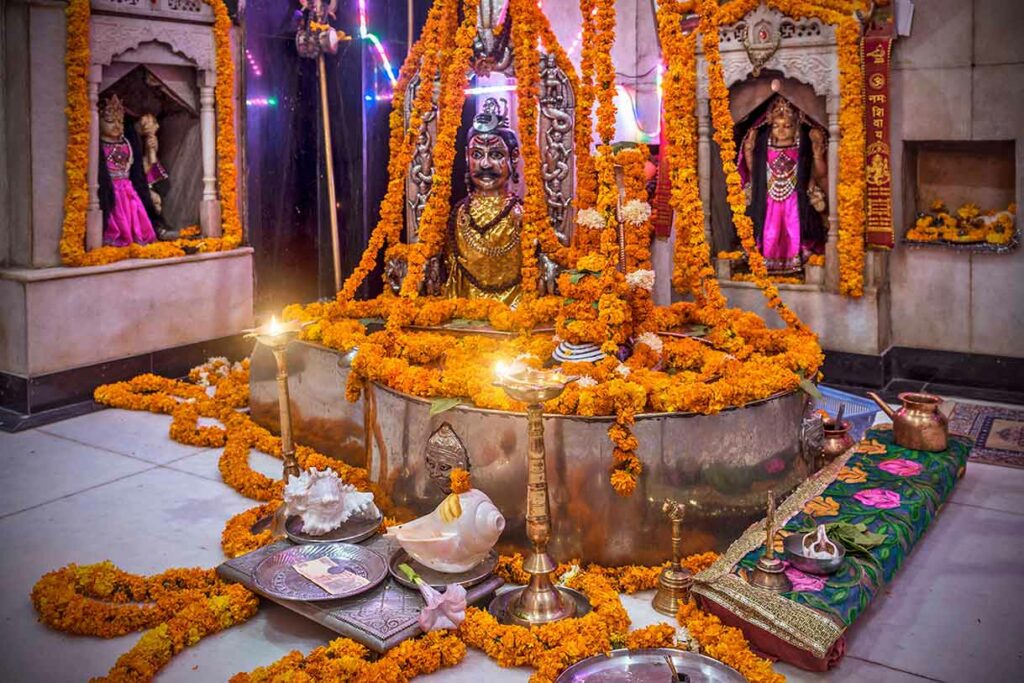
Mata No Madh
Mata No Math is also a spiritual place of great importance, as it is the original temple of the goddess Ashapura, avatar of Annapurna Devi. She is worshiped as the Kuldevi (patron saint) of the royal Jadeja family of Kutch and is also the main guardian deity of the region.
While written records of the temple’s construction date back to the 14th century CE, worship of the goddess Ashapura in this shrine is believed to have originated in ancient India; the Puranas as well as the Rudrayamal Tantra refer to it several times.

There are various legends related to this deity. The best-known version says that around 1500 years ago, a Marwari merchant from Rajasthan visited Kutch during the period of “Navaratri” (the nine nights consecrated to the Divine Mother) to sell his wares there.
While he slept, he saw the goddess Ashapura in a dream who asked him to build a temple at the place where he had stopped. However, the deity had given a specific injunction which was that after the construction of the temple, its doors were to remain closed for six months, at which time the Shakti would establish themselves there.
But, a few weeks before the expiration of the six months, Devchand, the merchant, heard celestial music in the temple. He resisted for some time, but piqued by curiosity, he ended up opening the doors of the sanctuary before the goddess was fully installed. This is why we find the current divinity sitting on his knees, not having had time to get up.
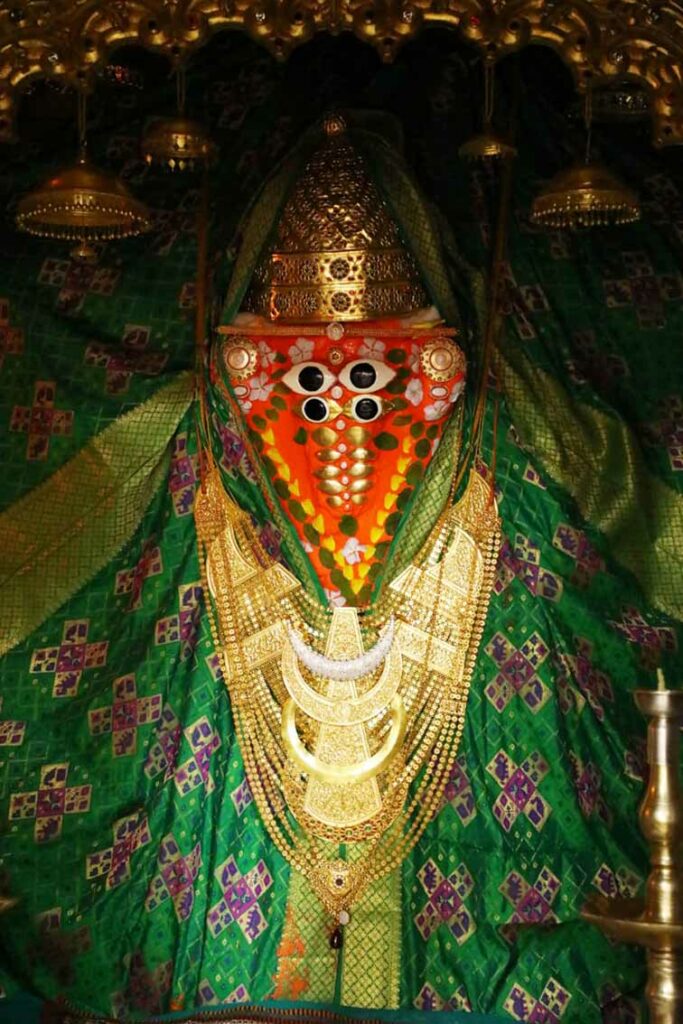
The Ashapura Mata statue in this temple is rather intriguing in appearance with seven pairs of eyes, one of the characteristics of the goddess.
As a tantric temple, it was once customary for the Maharaos (kings) of Kutch to sacrifice seven male buffaloes. This practice stopped in 1948. On the other hand, alcohol is still offered to her, a ritual common to several temples dedicated to the Shakti in northern India.

The temple is run by a “Mahant”, a Hindu priest, who belongs to a monastic order called Kapadi. The Kapadi Sampradaya claim to be descendants of Lalu Jasraj, a hermit who served as the god Rama’s guide through the harsh Thar Desert.
Mata No Madh is specially honored during the period of Navaratri, that of “Chaitra” (April/May) and “Ashvin” (September/October). The Mahant fasts for all nine days and performs the fire ceremony (havan) on the seventh day at midnight. The next day the main puja is performed by the Maharao or any other male member of the former ruling family of Kutch.
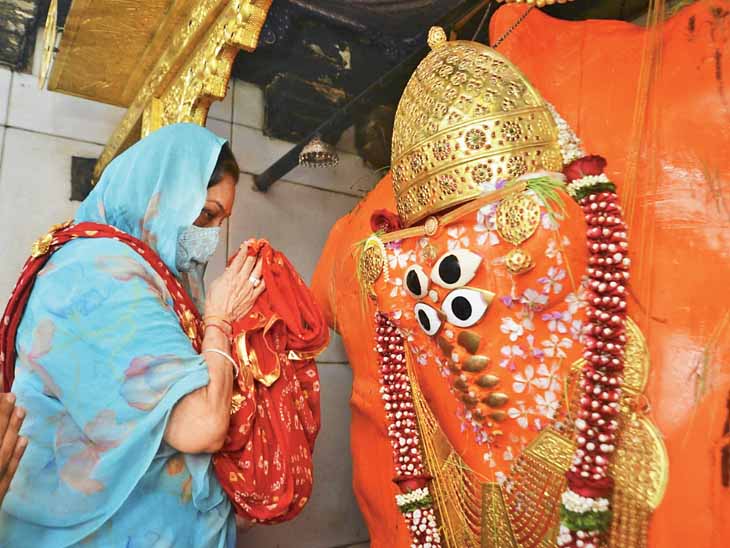
In 2021, historically, it was Maharani Preetidevi of Kutch who performed the puja-patri, her husband Maharao Pragmalji III having died that same year without naming an heir. This is the first time that a woman has acceded to the function of Pujari in this temple. This small revolution within the Rajput society caused a stir, so much so that the case was brought before the courts, which ruled in favor of the Maharani, stipulating, and I quote: “that there is no reason why this ritual would be forbidden to women”.
Dhoramnath Temple & Than Jagir Monastery (Dhinodhar Hills)
The hills of Dhinodhar, which are actually an ancient extinct volcano, are home to two places of interest: the temple of Dhoramnath and the mysterious monastery of Than linked to the tantric yogis Kanphata…
Read the full article on Than Monastery
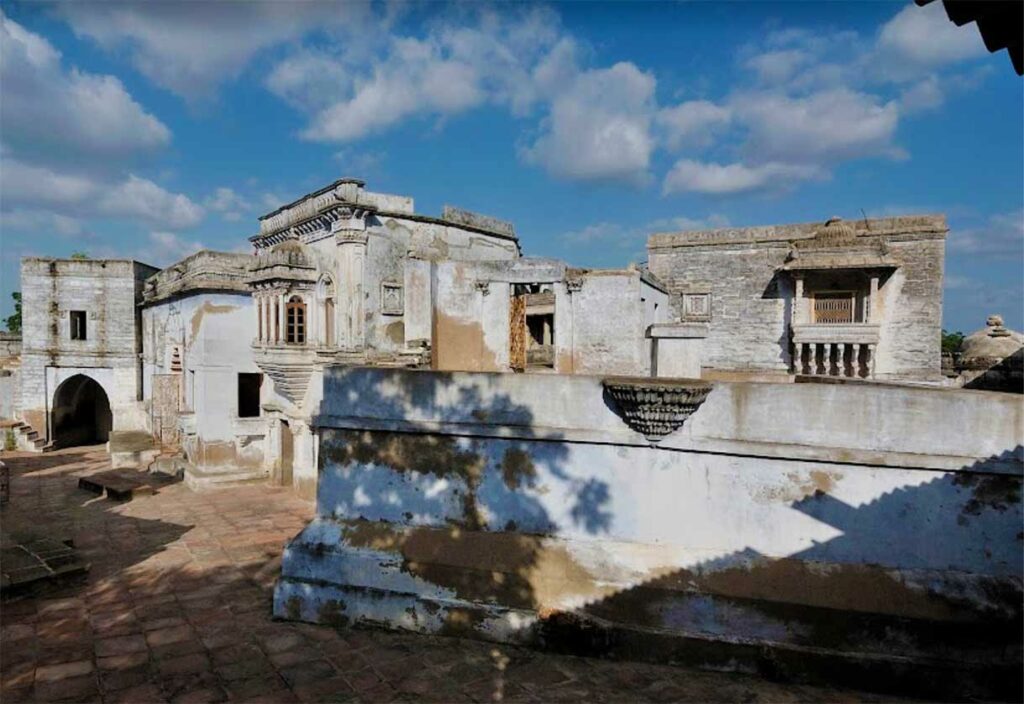
Jakh Botera temples
The Jakh Botera are temples specific to the region of Kutch which are dedicated to the worship of seventy-two warriors, or more exactly, seventy-one men and one woman, Sayari, who is their sister.
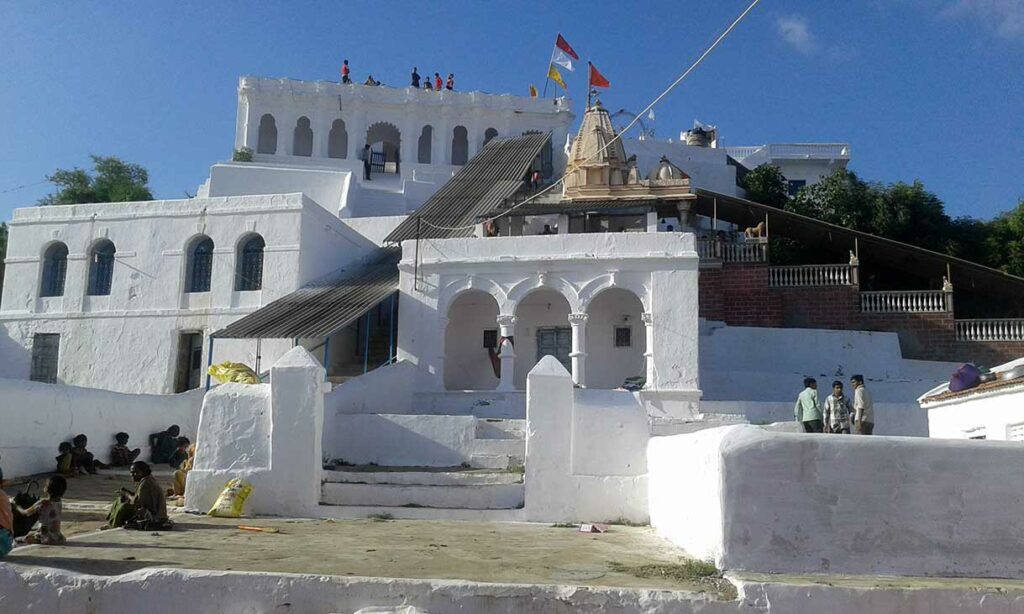
The origin of the Jakh Botera is unclear and the stories, therefore, multiple. Popular tradition describes the Jakhs as foreign warriors who fought against the evil King Punvaro. The Jakhs are said to have been shipwrecked on the coast of Kutch at the place now known as Jakhau. It is said that these warriors were tall, light complexioned and had an advanced culture. They are sometimes credited with superhuman powers. Some historians link them to Persia, others to the Byzantine Empire or Assyria.
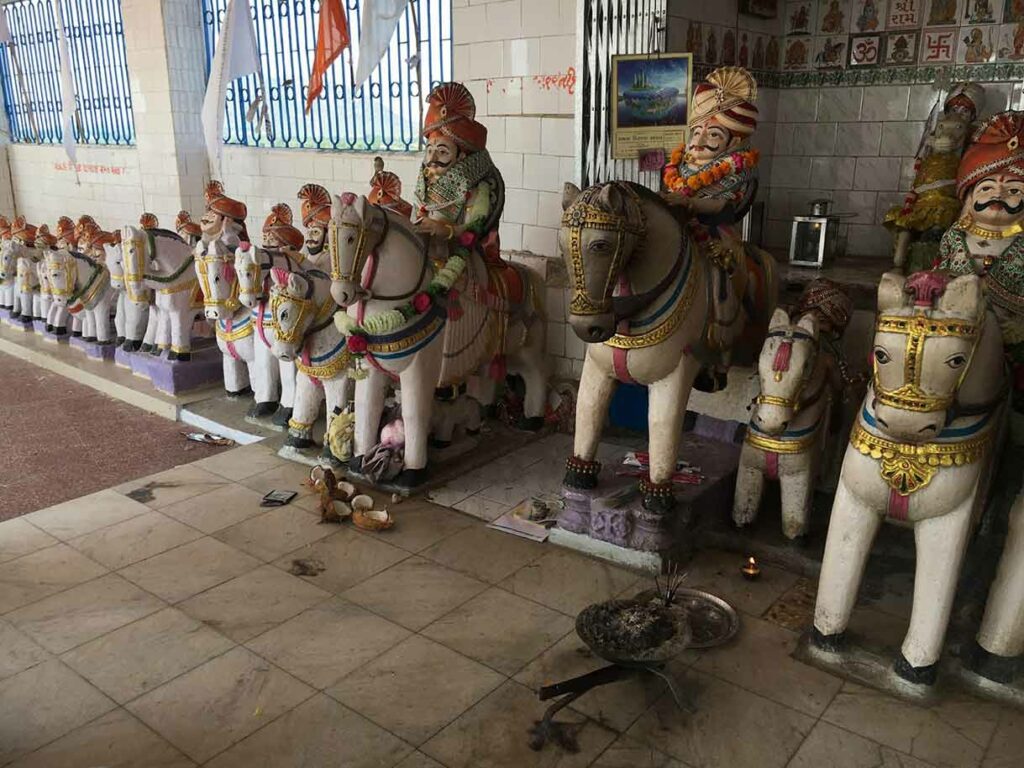
The Jakhs are said to have been murdered by Paddhara Gaḍha, the widow of King Punvaro in revenge for the murder of her husband; they were later commemorated as martyrs in several temples in Kutch.
These warriors are generally revered by the Sanghar community, who are either Vaishnava Hindus or Sunni Muslims. However, this Jakh worship tends to be claimed by Hindus alone, as they believe that the seventy-two horsemen are actually Yaksas, the demigods that appear in Hinduism, but also in Buddhism and Jainism.
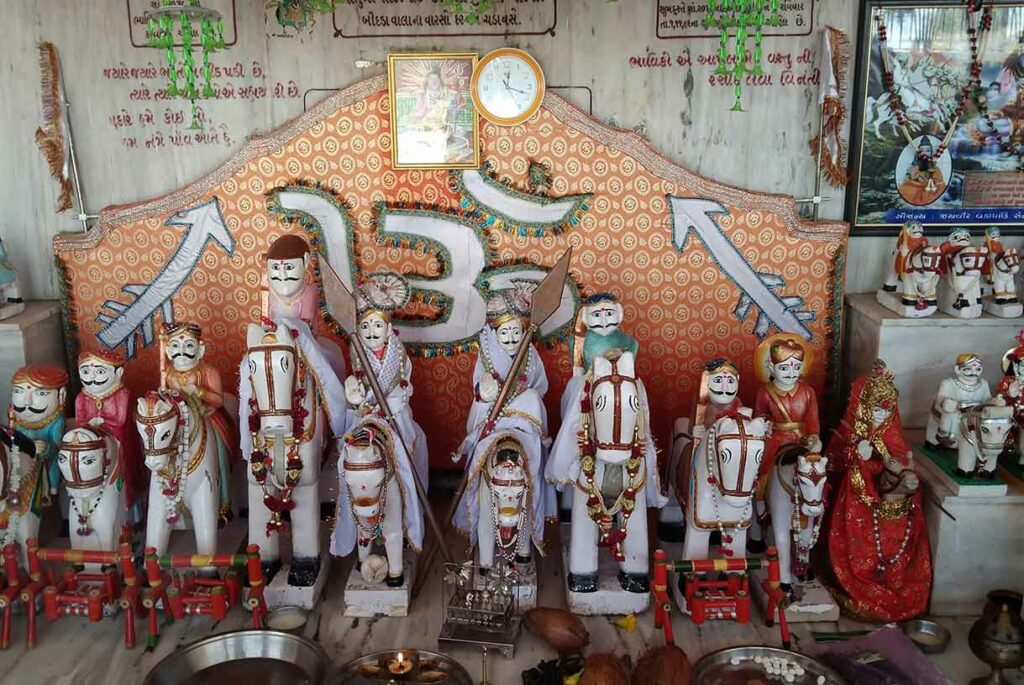
Sun temple of Kotay
Kotay, 1 hour north of Bhuj, includes the remains of an ancient city and a sun temple dating perhaps to the early part of the 10th century CE. Also known as Ra Lakha, the sanctuary even polished by the hot desert wind still has some great assets.
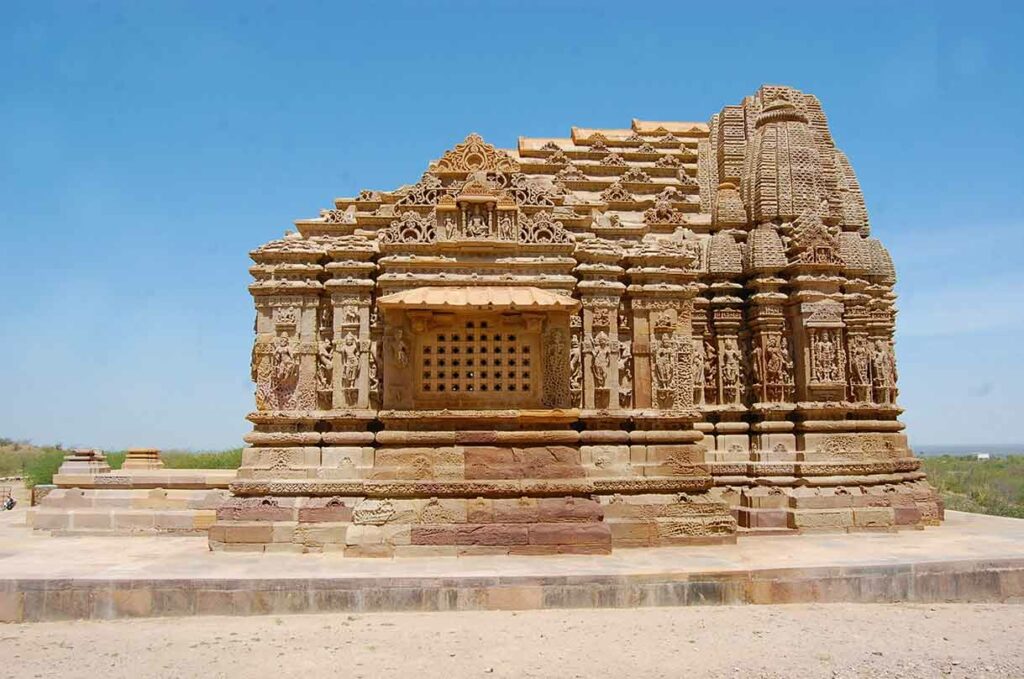
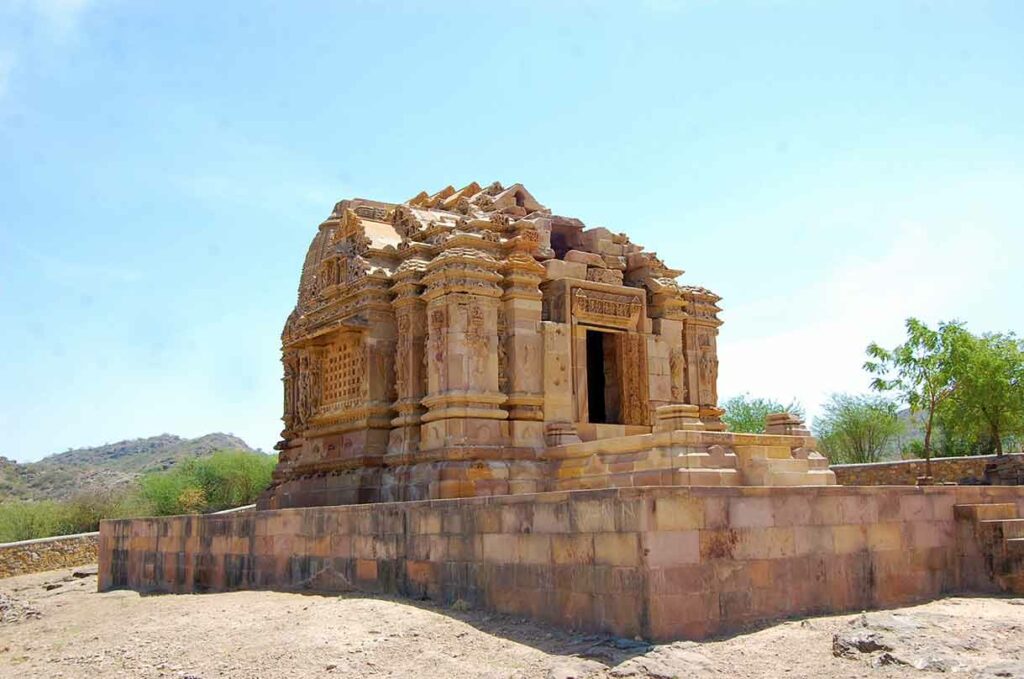
The temple, built of yellow and red sandstone, is set on a platform facing west. At the entrance, the Mukha Mandapa is absent, however the top of the door lintel of the Sabha mandapa is beautifully decorated with the Navagrahas, the nine planets of Hindu cosmology believed to influence human destinies.
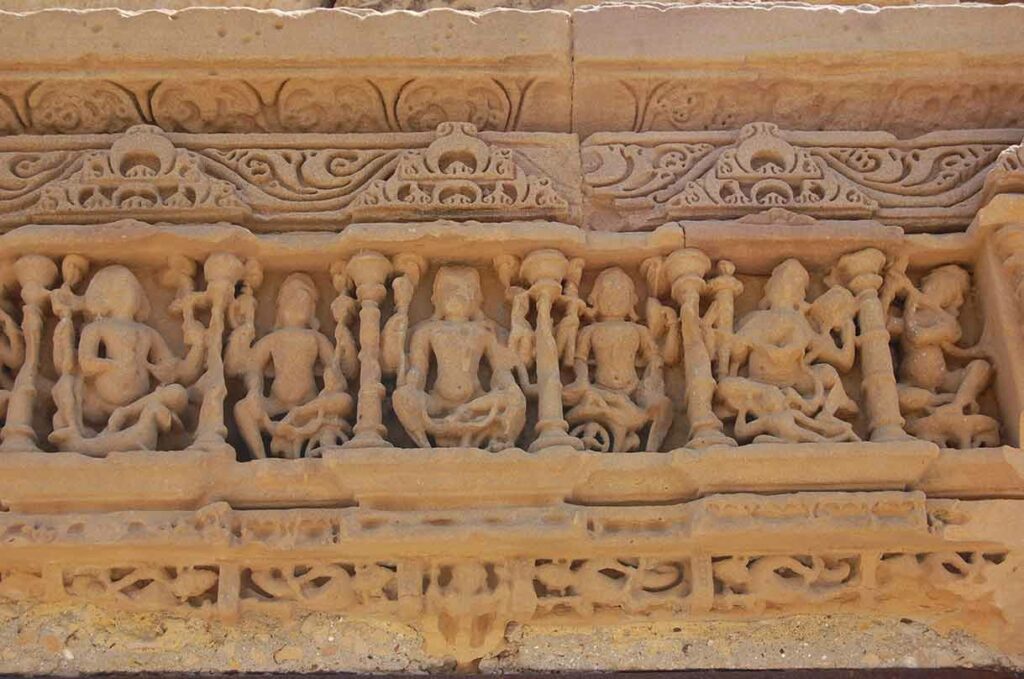
The exterior facades, very eroded, are decorated with several characters, asparas, deities and mythological animals

The upper part of the temple spire is missing, but the figures carved on square columns around the Garbhagriha and the detailing of the capitals are remarkable.

Ravechi temple
The temple of the goddess Ravechi is located in the village of Rav Nani, 3 hours east of Bhuj, on the edge of a pond covered with beautiful lotus. Although its last construction dates back to 1821, this high place of pilgrimage is already mentioned in ancient writings and it is said that the original temple was erected by the Pandava brothers of the Mahabaratha epic.
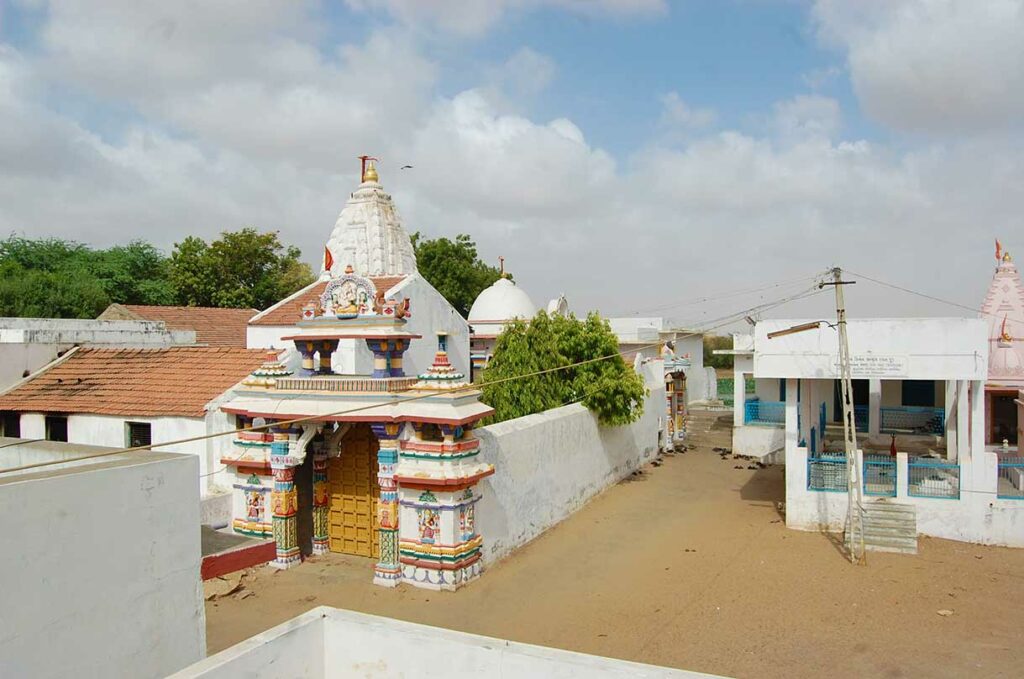
Ravechi is another name of Goddess Ashapura. Here, the image of the goddess of the temple is called “Swayambhu” that is to say that she is self-incarnated. She is surrounded by several other deities who also seem to be imprinted in the rock. An eternal lamp, Akhand Jyoti Dipika, burns beside them.
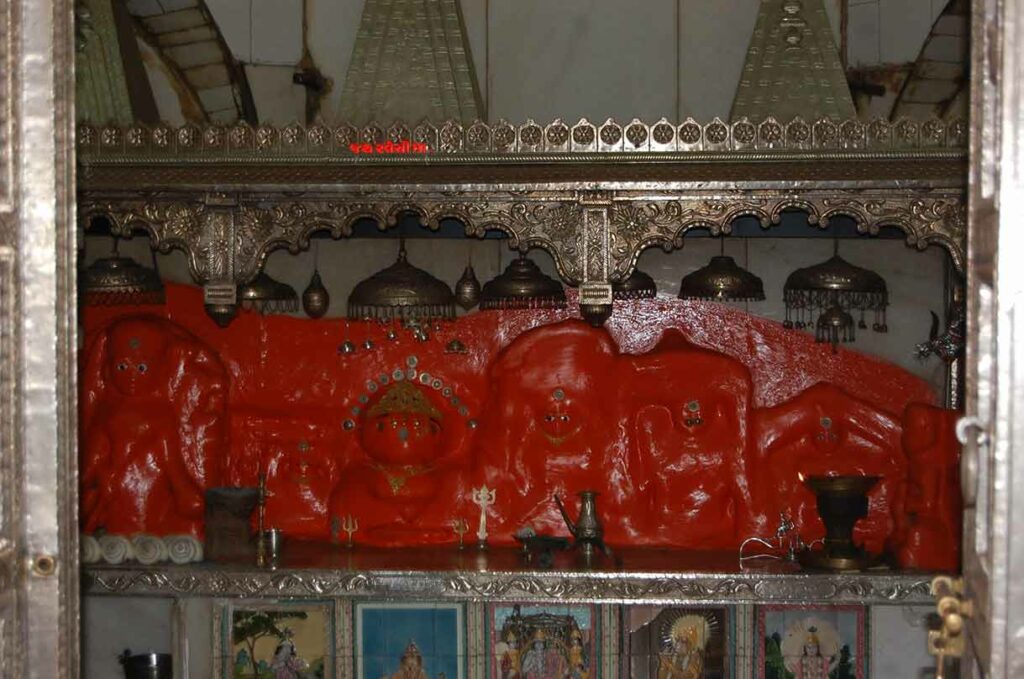
Ravechi is also known for its “Gaushala” where about 2500 cows reside, but especially for its great fair of the same name which takes place in September each year and which brings together several indigenous communities of Kutch in traditional outfits such as the Ahir, the Rabaris, the Charans, among others. A colorful festival that delights photographers from all over the world.
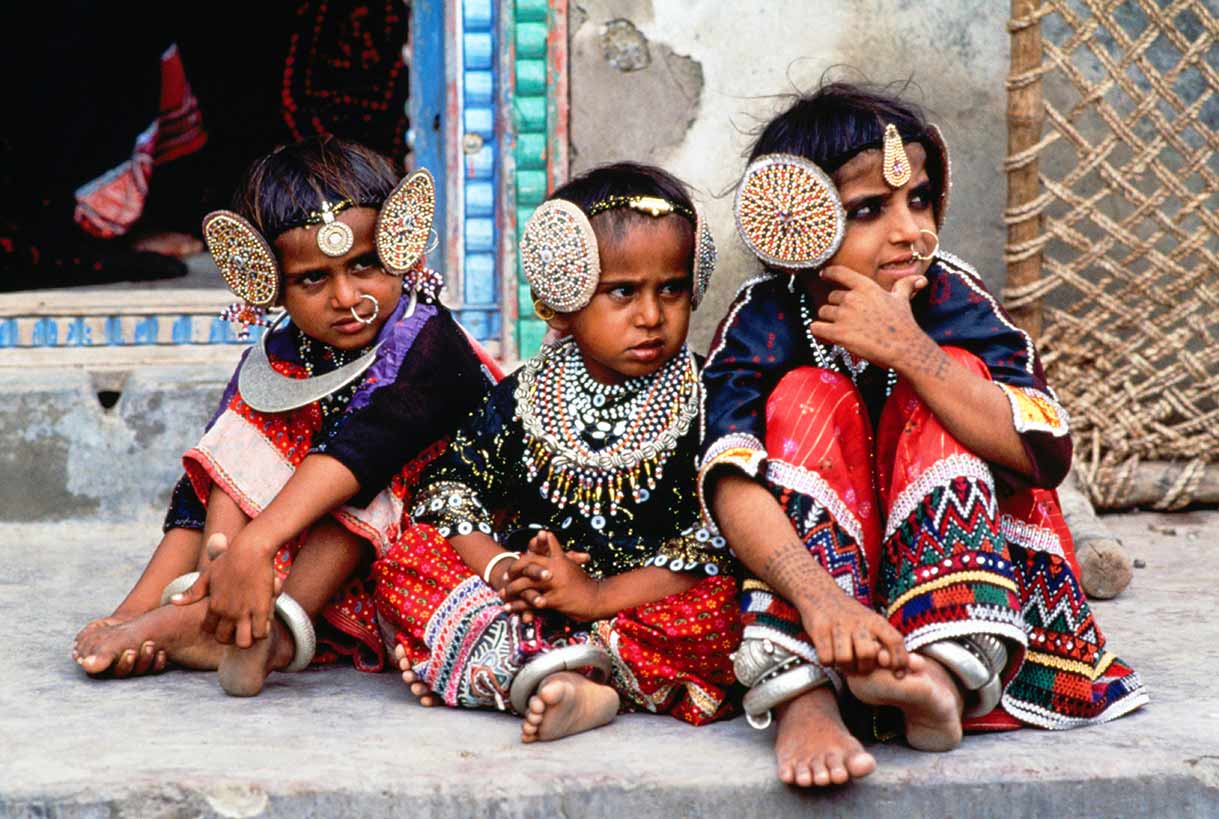
Vrajvani temple
Vrajvani Dham, located in Rapar Taluka, is a highly revered temple, especially by the Ahir community. This shrine is unique in that it houses 140 life-size statues of Ahir women bowing to Lord Krishna.
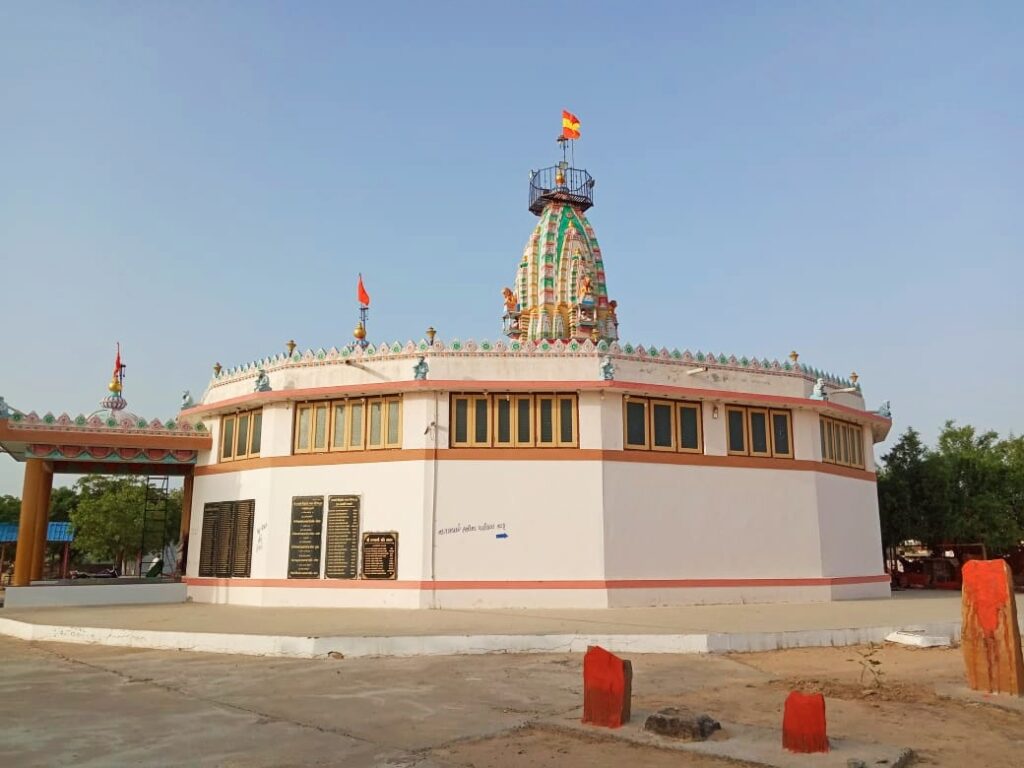
The legend of Dholithar no Dhoro (Vrajvani Drummer’s Mound) says that a few hundred years ago, during the celebration of Janmastami, a young man started playing Dhol (Indian percussion) in a village. One hundred and forty women from the Ahir community, irresistibly attracted by the sound of the drum, began to dance in a circle around the musician, to the rhythm of the percussion. The performance continued uninterrupted for days and days.
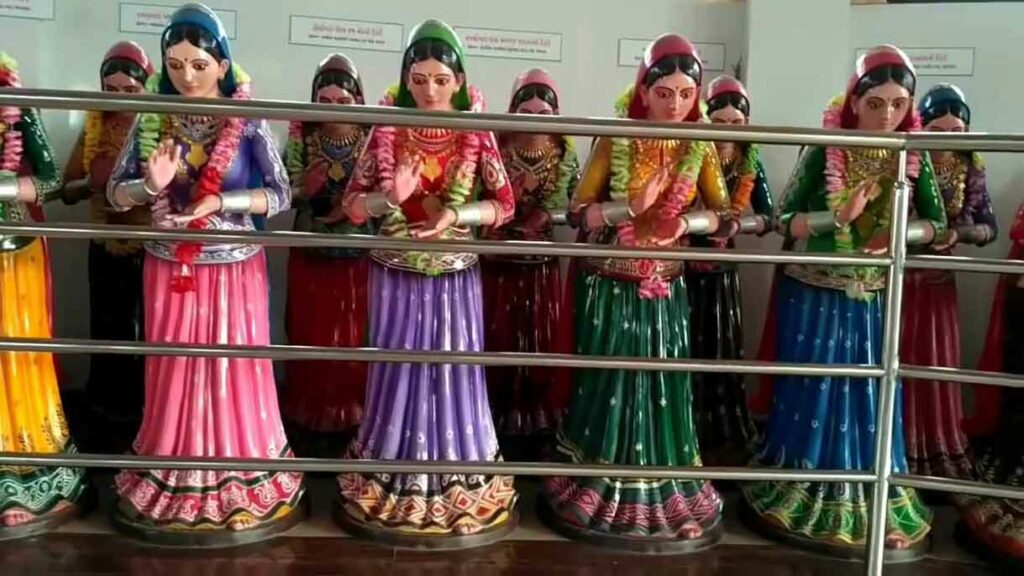
The dancers’ husbands, not understanding this sudden madness, tried to stop the Dol player, in vain. They ended up beheading him. Horrified by such an act, the 140 women sacrificed their lives on a stake, because, for them, the musician was none other than the reincarnated lord Krishna and this dance recreated the Raas Leela of Krishna and the gopis.
[ Video: song telling the legend of Vrajvani. Notice by the way the sumptuous traditional clothes entirely embroidered by hand by the Ahir women… And what about the jewelry! ]

